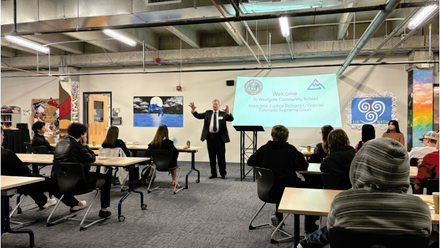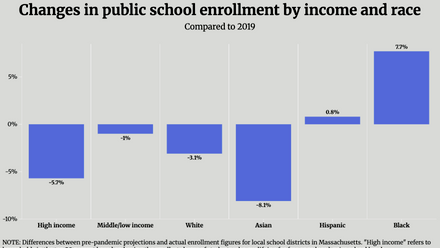As a Matter of Fact: Charters are Improving Public Education
While publicly addressing falsehoods can sometimes amplify them, allowing misinformation to spread unchecked is perhaps more harmful. It’s for that reason that I aim to set the record straight.
A recent article regarding education and charter schools contained numerous falsehoods.
First, the facts on charter schools.
Charter schools are free, public, and open to all. Charters in Colorado are nonprofit organizations. Today, nearly 270 serve more than one out of seven public school students across Colorado. Notably, charter schools serve a higher percentage of multilingual learners and students of color than traditional public schools (TPS).
And they do so while receiving less funding than traditional public schools.
Every day, Colorado charter schools illustrate the possibilities that exist within classroom walls, particularly for those who have been historically marginalized. Here are a few examples from Colorado:
- Colorado charter school students are 20 percent more likely to attend a green (performance-rated) school than non-charter school students.
- Colorado charter high school students are also 20% more likely to matriculate to a four-year college after graduation.
- A study by Stanford’s Center for Research on Education Outcomes (CREDO) found that charter school students in Denver gained an additional 54 days of learning in reading and an additional 60 days of learning in math as compared to their non-charter peers.
- According to the Keystone Policy Center, Colorado charter school students in grades 3-8 outperformed their peers and showed more academic growth in both literacy and math than those in district-managed schools.
- Six of the top ten public high schools in Colorado are charter schools [USNWR, 2024]
National studies have also reported similar findings:
- Charter school students in poverty and those who are English-language learners both had stronger growth than their TPS peers nationwide. [CREDO]
- Nationally, Black charter students had 35 days more growth in a school year in reading and 29 days in math compared to their non-charter peers. [CREDO]
- Hispanic students nationally grew an extra 30 days in reading and 19 additional days in math relative to their TPS peers. [CREDO]
These statistics align with numerous other studies that show that charter schools move students of color and those in poverty ahead in their learning faster and with stronger results than their TPS peers.
Moreover, charter schools have also been shown to positively impact traditional schools nearby, an outcome sometimes referred to as the “competitive effect.” Among all the proposed solutions for improving education, charters stand out as one of the few that have made a tangible, lasting impact on marginalized students. If we are serious about tackling the persistent opportunity gaps within education, we should look to those schools that are consistently closing them.
With 30 years of data to back it up, the evidence is clear. Blaming achievement gaps on charter schools is as absurd as blaming solar panels for global warming.
Charter schools are not only viable but also vital to the future of public education. They offer a beacon of hope for students who have historically been underserved, proving that with the right resources and innovative approaches, all children can achieve their full potential. It's time to embrace charter schools in the quest to create equitable and prosperous opportunities for all students.






